html
iQOO Z10 Turbo Series & MediaTek Dimensity 9500: Full Specifications and Pricing Breakdown
1. Introduction
Last night, iQOO unveiled its latest mid-range smartphones—the Z10 Turbo and Z10 Turbo Pro—targeting performance enthusiasts and gamers. Both models feature cutting-edge hardware, including high-refresh-rate displays, massive batteries, and advanced cooling systems. Alongside these launches, leaks about MediaTek’s upcoming flagship chipset, the Dimensity 9500, have surfaced, hinting at significant upgrades in performance and AI capabilities. This article breaks down the key details of these devices and the latest processor news, optimized for clarity and SEO-friendly readability.

2. iQOO Z10 Turbo Series: Key Features and Pricing
2.1. iQOO Z10 Turbo
- Display: 6.78-inch 1.5K AMOLED panel (2800×1260 resolution), 144Hz refresh rate with 4320Hz PWM dimming and DC-like eye protection, Corning Gorilla Glass (C9+ material) for durability.
- 性能: MediaTek Dimensity 8400 “full-blooded” chipset, LPDDR5X RAM + UFS 4.1 storage, 7,000mm² ice-cooling vapor chamber for sustained performance.
- Battery & Charging: 7,620mAh battery with 90W fast charging (fully charges in ~35 minutes).
- Camera: 50MP main sensor (LYT-600, OIS) + 2MP depth sensor, 16MP front camera.
- Additional Features: Dual stereo speakers, X-axis motor, NFC, IR blaster, and IP65 dust/water resistance. Weight: 212g; Thickness: 8.09mm.
Pricing
- 12GB+256GB: $248 (¥1,799)
- 16GB+256GB: $275 (¥1,999)
- 12GB+512GB: $303 (¥2,199)
- 16GB+512GB: $330 (¥2,399)
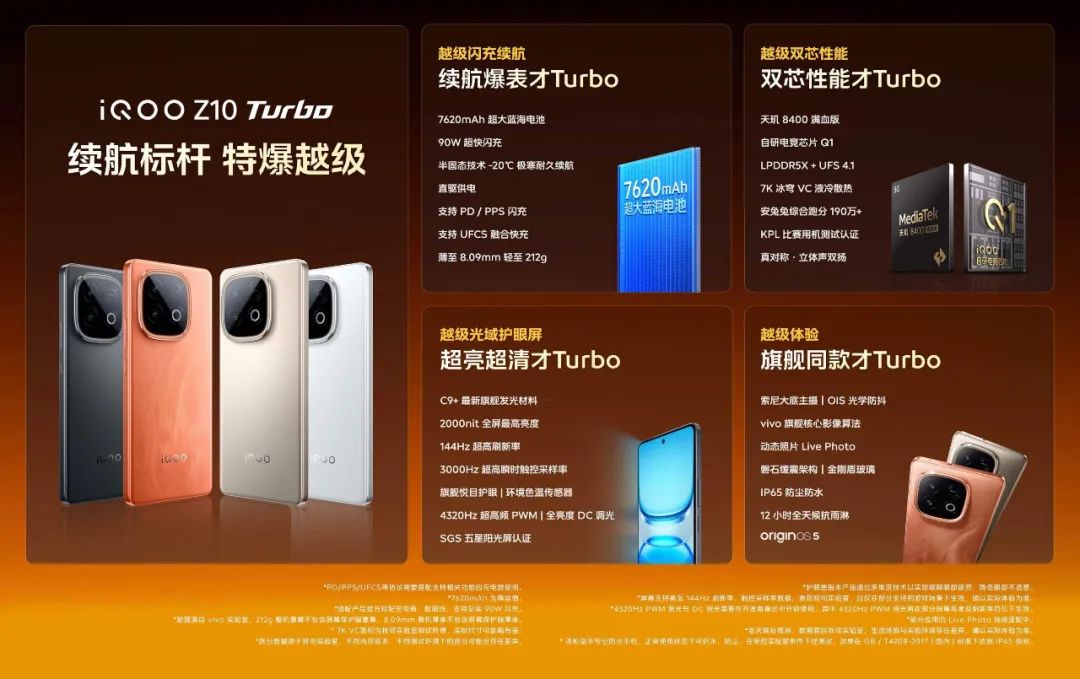
2.2. iQOO Z10 Turbo Pro
- Upgrades Over Standard Model:
- Processor: Snapdragon 8s Gen 4 (4nm, 1+3+4 CPU architecture).
- Battery & Charging: 7,000mAh battery with 120W ultra-fast charging (33-minute full charge).
- Camera: 50MP main (LYT-600, OIS) + 8MP ultra-wide.
- Weight: Reduced to 206g.
Pricing
- 12GB+256GB: $275 (¥1,999)
- 16GB+256GB: $303 (¥2,199)
- 12GB+512GB: $330 (¥2,399)
- 16GB+512GB: $358 (¥2,599)
Comparison Table
| Feature | Z10 Turbo | Z10 Turbo Pro |
|---|---|---|
| Processor | Dimensity 8400 | Snapdragon 8s Gen 4 |
| Battery | 7,620mAh | 7,000mAh |
| Charging Speed | 90W | 120W |
| Rear Camera | 50MP + 2MP | 50MP + 8MP |
| Starting Price (USD) | $248 | $275 |
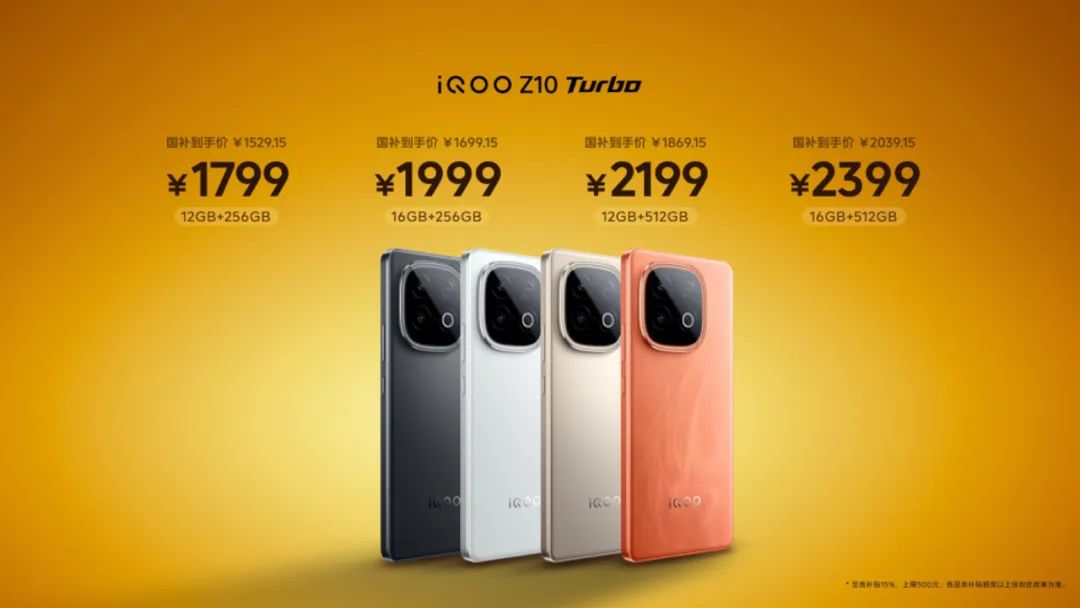
3. MediaTek Dimensity 9500: Next-Gen Flagship Chipset Leaks
3.1. Specifications Overview
- Process Node: TSMC’s 3nm N3P technology (improved efficiency over N3E).
- CPU Architecture: 1×Travis (Cortex-X9 core) + 3×Alto (Cortex-X9) + 4×Gelas (Cortex-A7), balancing high performance and power efficiency.
- GPU: Immortalis-Drage GPU with enhanced ray tracing and 16MB L3 cache, 10MB SLC for faster data access.
- AI & Connectivity: NPU 9.0 with 100 TOPS AI compute power, supports LPDDR5x (10,667Mbps) and UFS 4.1 storage.

3.2. Expected Performance
- Antutu benchmark scores rumored to exceed 4 million, rivaling Qualcomm’s Snapdragon 8 Elite 2.
- Early test devices reportedly show 20% better energy efficiency compared to Dimensity 9400.
3.3. OPPO Find X9 Pro: First Device with Dimensity 9500
- Camera Changes: Replaces quad-camera setup (dual periscope lenses) with triple cameras, including a 200MP periscope telephoto lens (1/1.4-inch sensor) for ultra-long-range photography.
- Launch Timeline: Expected in September 2025.
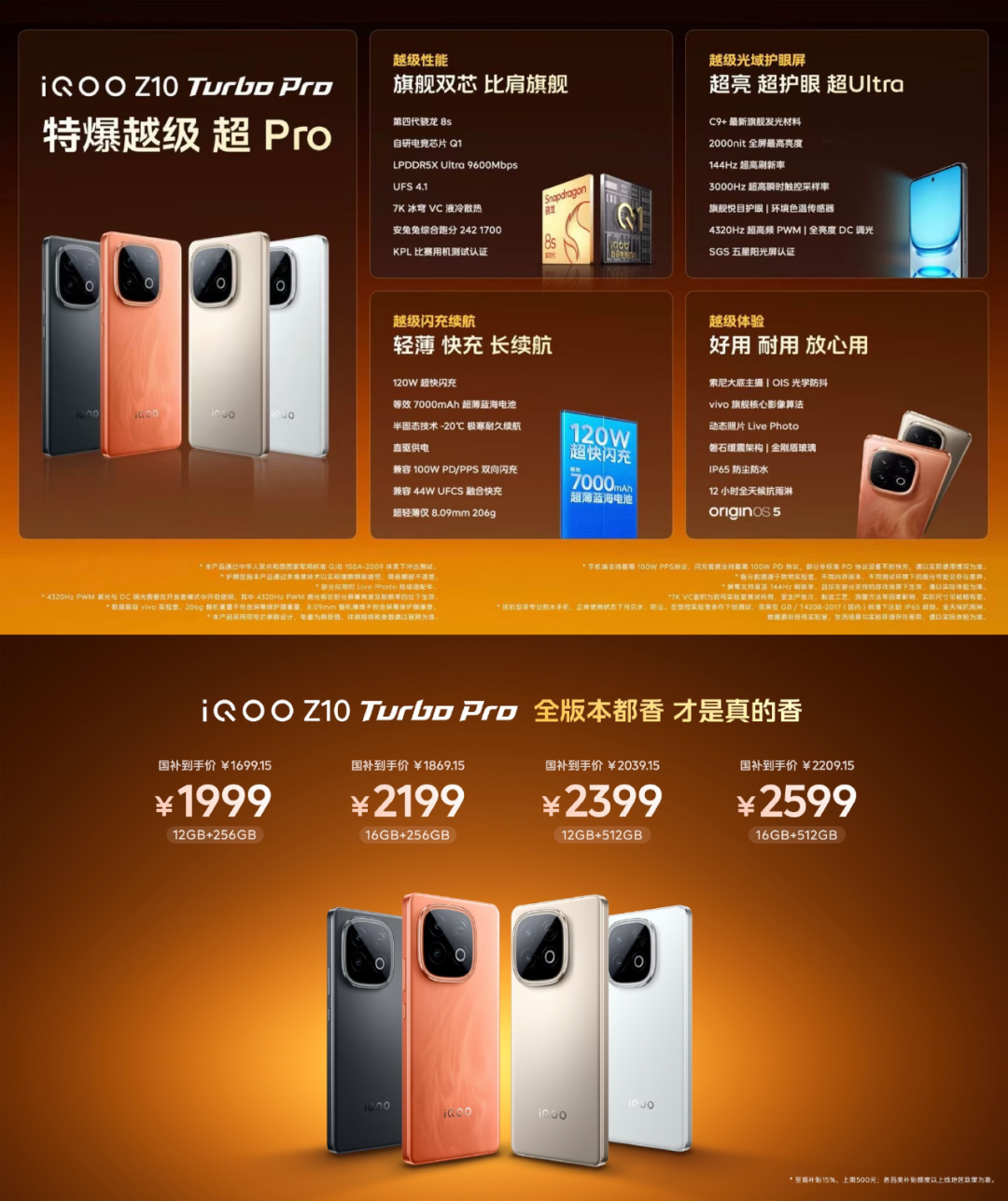
4. Market Impact and Competitor Analysis
4.1. iQOO vs. Redmi Turbo 4 Pro
- Battery: iQOO Z10 Turbo Pro’s 7,000mAh vs. Redmi’s 7,550mAh.
- Charging: 120W vs. 90W.
- Build: Plastic vs. metal frame (Redmi).
- Target Audience: iQOO focuses on gamers; Redmi emphasizes durability and design.
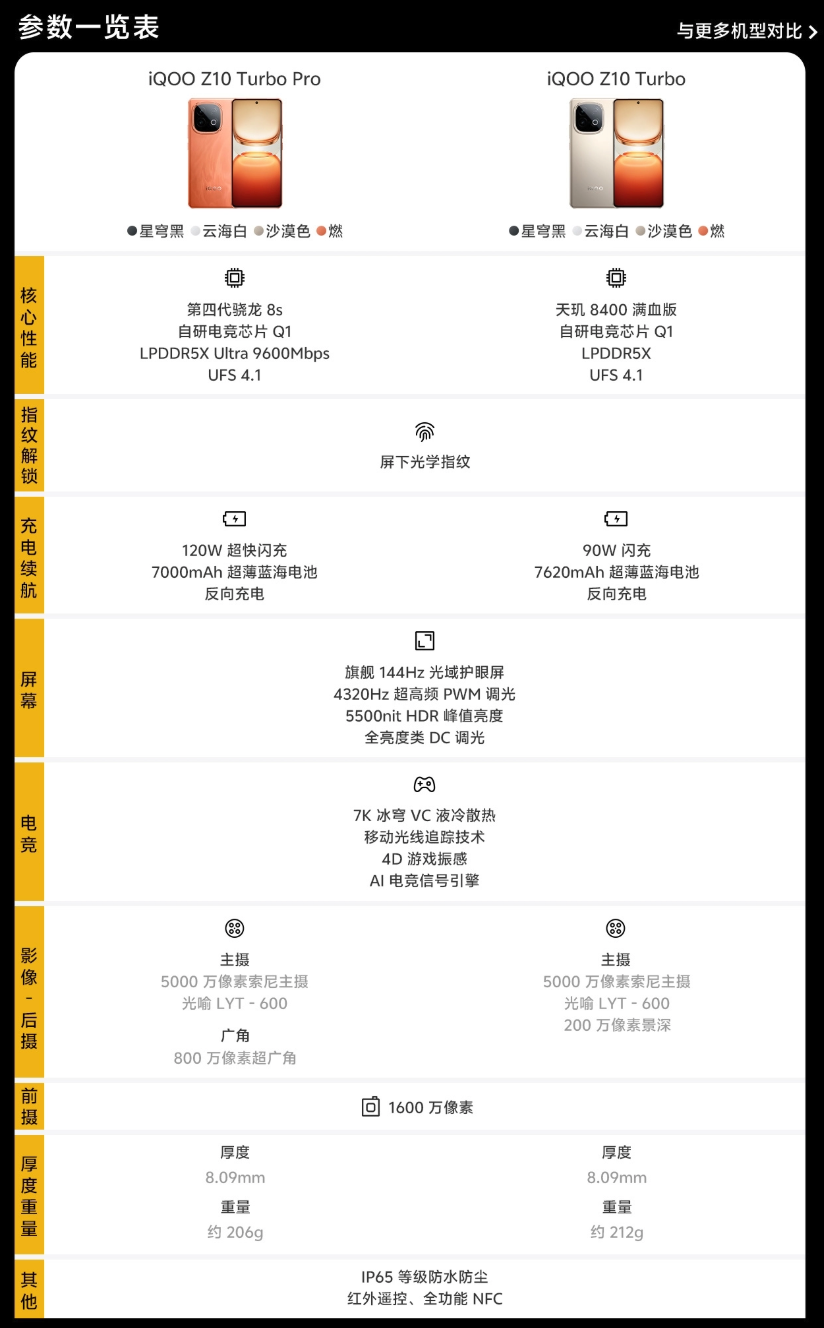
4.2. Dimensity 9500 vs. Snapdragon 8 Elite 2
- Process Node: Both use TSMC 3nm, but Snapdragon may adopt a 4.4GHz clock speed.
- AI Capabilities: MediaTek’s 100 TOPS vs. Snapdragon’s rumored 120 TOPS.
- Adoption: Flagship phones from vivo, OPPO, and Xiaomi expected by Q4 2025.
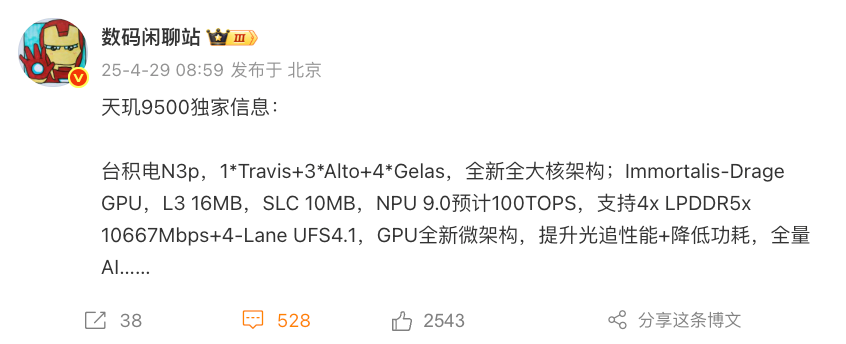
5. Conclusion
The iQOO Z10 Turbo series delivers exceptional value with flagship-tier specs at mid-range prices, particularly appealing to gamers and heavy users. Meanwhile, MediaTek’s Dimensity 9500 sets the stage for a fierce battle in the high-end SoC market, promising groundbreaking performance and efficiency. With devices like the OPPO Find X9 Pro adopting this chipset, the second half of 2025 will likely redefine smartphone capabilities in gaming, photography, and AI.
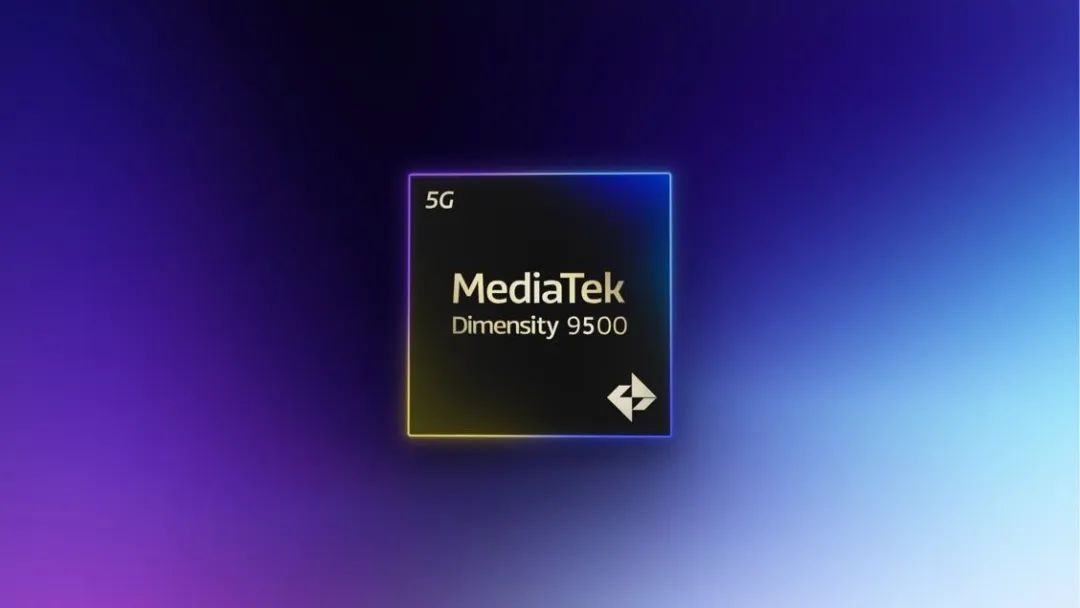
Note: Prices converted from CNY to USD for international readers. Specifications and release timelines are based on official announcements and credible leaks.
